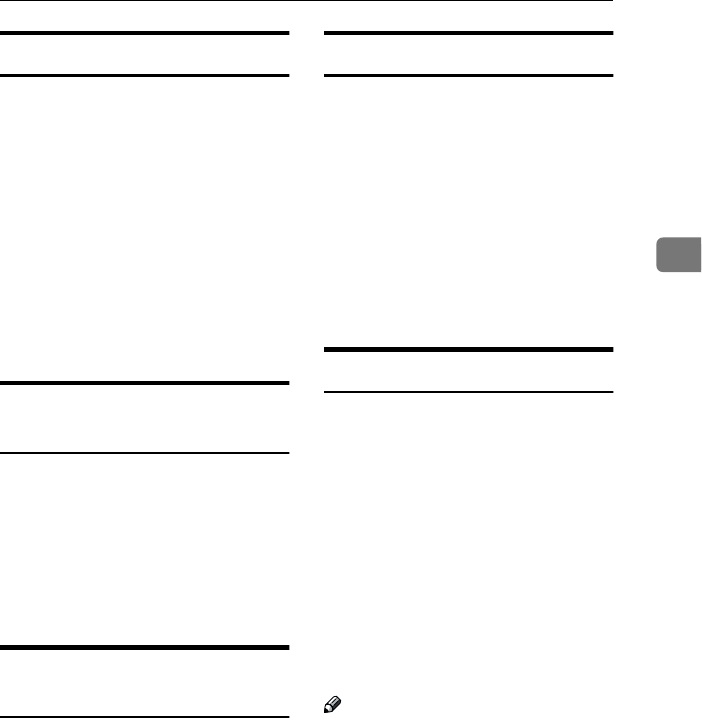
More Transmission Functions
23
3
Broadcasting Sequence
If you dial several destinations for the
same message (Broadcasting), the
messages are sent in the order in
which they were dialed. If the fax
message could not be transmitted to a
destination, the machine redials that
destination after the last destination
specified for Broadcasting. For exam-
ple, if you specify four destinations A
through D for broadcasting, and if the
lines to destinations A and C are
busy, the machine dials the destina-
tions in the following order: A, B, C,
D, A, and C.
Sending a Fax Message
Immediately
To send a fax message immediately,
use Immediate Transmission. If you
have just set up an original for broad-
casting, Immediate Transmission will
interrupt the current communication.
Your message will not be sent until
previously queued files have been
sent.
Broadcasting : Checking
Progress
To check which destinations the fax
message has been sent to so far, print
the TX file list.
Automatic Redial
If a fax message could not be trans-
mitted because the line was busy or
an error occurred during transmis-
sion, redialing is done 4 times at 5
minutes intervals (these figures vary
according to which country you are
in).
If redialing fails after four redials, the
machine cancels the transmission and
prints the Communication Result Re-
port or Communication Failure Re-
port.
Batch Transmission
If you send a fax message by Memory
Transmission and there is another fax
message waiting in memory to be
sent to the same destination, that
message is sent along with your mes-
sage. Several fax messages can be sent
with a single call, thus eliminating the
need for several separate calls. This
helps save communication costs and
reduces transmission time.
Fax messages for which the transmis-
sion time has been set in advance are
sent by Batch Transmission when that
time is reached.
Note
❒ You can switch this function on or
off with the User Parameters. See
p.58 “User Parameters” (Switch06,
Bit4).


















